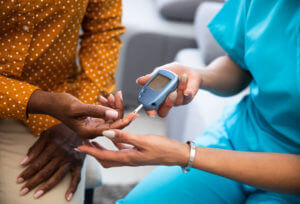
Diabetes, often referred to as a silent disease, affects millions of people worldwide. What makes it particularly concerning is its ability to progress unnoticed, leading to severe health complications.
But the silver lining? Prediabetes—a condition that precedes type 2 diabetes—is both detectable and reversible with the right knowledge and action. One of the best tools for catching prediabetes early is diabetes testing.
This blog will explore why diabetes testing for a prediabetes diagnosis is so important and how it can empower individuals to take control of their health.
What is Prediabetes?
Prediabetes is a condition where blood glucose levels are higher than normal but not high enough to be classified as type 2 diabetes. According to the Centers for Disease Control and Prevention (CDC), 96 million adults in the United States—or more than 1 in 3—have prediabetes.
What is even more alarming is that more than 80% of those individuals do not know they have it.
If left unmanaged, prediabetes can progress to type 2 diabetes. Type 2 diabetes is a lifelong condition that increases your risk for heart disease, kidney damage, vision problems, and more.
However, early detection and lifestyle changes, such as improving diet and increasing physical activity, can prevent or delay the onset of diabetes. This is why diabetes testing is crucial for long-term good health.
How is Diabetes Testing Done?
Diabetes testing involves simple tools that measure your blood sugar levels. Below are the most common tests used by providers:
Fasting Plasma Glucose Test (FPG)
This test measures your blood sugar level after you’ve gone without eating or drinking (except for water) for at least 8 hours, typically overnight. It helps determine how well your body manages blood sugar in a fasting state.
A result of 100-125 mg/dL indicates prediabetes, meaning your blood sugar is higher than normal but not high enough to be classified as diabetes.
Oral Glucose Tolerance Test (OGTT)
The OGTT examines how your body processes sugar after consuming it. For this test, you are given a sugary drink to consume, and your blood sugar levels are measured two hours later.
If your blood sugar level falls between 140-199 mg/dL, it suggests prediabetes. This indicates your body is not processing sugar efficiently, which could lead to diabetes, if not managed well.
A1C Test
The A1C test provides an overview of your average blood sugar levels over the past 3 months. It does this by measuring the percentage of hemoglobin (a protein in your red blood cells) that is coated with sugar (glycated).
An A1C result of 5.7% to 6.4% indicates prediabetes, showing that your blood sugar levels have been consistently higher than normal during this period.
Random Blood Sugar Test
This test checks your blood sugar level at any time of the day, regardless of when you last ate. It can quickly identify whether your blood sugar is abnormally high or within a normal range.
While this test alone cannot diagnose prediabetes or diabetes, frequent high results may prompt further testing.
Who Should Consider Diabetes Testing?
While anyone can develop prediabetes, certain factors can increase your risk. The CDC and other top health organizations recommend diabetes testing for individuals who:
- Are overweight or have a body mass index (BMI) above 25
- Are 45 years or older
- Have a family history of type 2 diabetes
- Have high blood pressure or high cholesterol levels
- Lead a primarily sedentary lifestyle
- Have a history of gestational diabetes (diabetes during pregnancy) or have given birth to a baby weighing more than 9 pounds
- Belong to certain ethnic groups, such as African American, Hispanic/Latino, Native American, or Asian American
If any of these risk factors apply to you, it is wise to speak with a healthcare provider about diabetes testing.
How Early Detection Combats Diabetes
Detecting prediabetes early is a chance to change the course of your health. Research shows that programs aiming to improve diet, increase exercise, and achieve modest weight loss (5-7% of body weight) can reduce the risk of progressing to diabetes by 58%.
This underlines how crucial diabetes testing is—not only for knowing your status but also for giving you the motivation and opportunity for change.
What Happens After Testing?
If you test positive for prediabetes, there is no need to panic. Instead, this is a chance to take proactive steps toward better health. Here is how a provider can help:
Lifestyle Plan
Providers may create a personalized plan for improving your diet, exercising more, and losing weight, as these are key steps to reversing prediabetes.
Monitoring Your Progress
Regular follow-up tests can measure how well your blood sugar is responding to interventions.
Medication When Needed
Some people may require medication to regulate blood sugar levels in addition to lifestyle changes.
Ongoing Support
Providers can guide you through the process, offering support and recommendations to ensure you feel empowered every step of the way.
Diabetes Testing for a Prediabetes Diagnosis in Colorado Springs, CO
Managing prediabetes starts by connecting with the right provider. At Abundance Health Care, we are passionate about helping you stay ahead of health problems.
Our certified diabetic nurse educator and nutritionist work closely with patients to develop personalized care plans that fit their lifestyle and make meaningful changes. With diabetes testing and expert guidance, we can help you detect prediabetes early and take steps to prevent diabetes.
To learn more about how we can help you, call (720) 869-0547 or fill out our appointment form. We look forward to serving you!
Sources:


